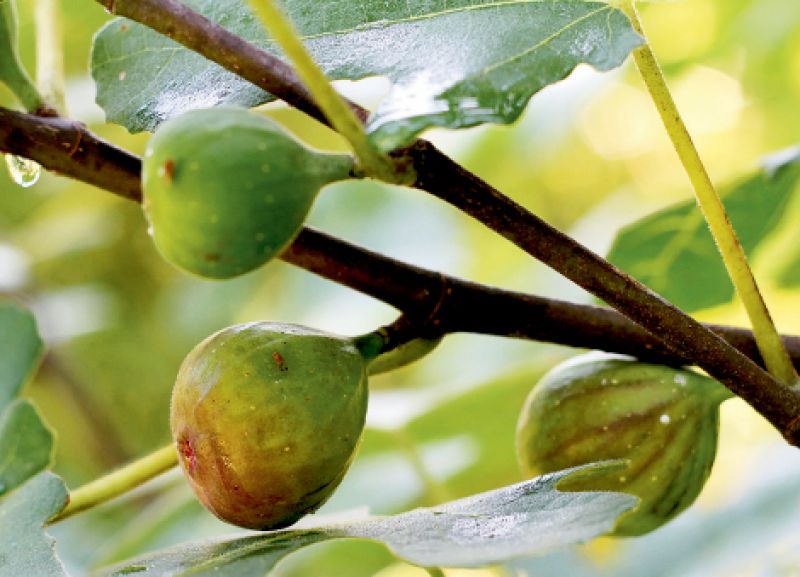
Nothing beats the delicate flavor of a freshly harvested fig. Thankfully, these plump and juicy fruit are plucked from fast- and easy-to-grow trees (Ficus carica) that thrive in our climate. A bonus? Their large, deeply lobed leaves provide a respite from the summer sun.
Spring is the ideal time to plant fig trees. Be sure to select a common variety, as these do not require cross-pollination. When planted in the landscape, most grow in a large, shrub-like habit and can reach 15 to 30 feet in height with lateral branches extending equally as wide. For smaller gardens, consider training your fig as an espalier against a brick wall.
Green Ischia or Verte Fig
(Ficus carica ‘Ischia’)
Are birds beating you to the harvest? Plant this smaller variety that reaches 10 to 15 feet in height, as the skin of the fruit remains a bright yellowish-green at maturity and is less attractive to birds. Its red-fleshed fruit ripens in mid-summer and offers good flavor that’s great for preserves.
Hardiness: Zones 8a-10
Light: Full sun for eight hours or more
Soil: Well-draining, nutrient-rich loam; pH 6-6.5
Water: Although it’s drought-tolerant, water weekly and a bit more when in full fruit. Reduce when dormant.
Feed with slow-release fertilizer before new growth appears.
Brown Turkey Fig
(Ficus carica ‘Brown Turkey’)
This classic Southern favorite grows from 10 to 30 feet in height and offers up large pear-shaped fruit with copper- to purple-hued skin that are good fresh and excellent for preserving. Expect a reliable late summer crop—as well as the “breba,” or early, crop in spring or early summer—from this cold-hardy tree.
Hardiness: Zones 7a-11
Light: Full sun for eight hours or more
Soil: Well-draining, nutrient-rich loam; pH 6-6.5
Water: Although it’s drought-tolerant once established, water weekly and a bit more when in full fruit. Reduce when dormant.
Maintain: If grown in a container, prune to keep manageable size. Recharge soil with slow-release fertilizer.
Celeste or Sugar Fig
(Ficus carica ‘Celeste’)
Also known as the “sugar fig” or “honey fig,” this variety thrives in the Lowcountry and sets the standard for sweetness. The tree can reach 15 to 20 feet and tolerate cooler temperatures. It produces pear-shaped fruit with bronze skin that are small to medium in size. Known for its rich flavor, this fig is excellent dried or in preserves.
Hardiness: Zones 7a-10b
Light: Full sun for eight hours or more
Soil: Well-draining, nutrient-rich loam; pH 6-6.5
Water: Although it’s drought-tolerant once established, water weekly and a bit more when in full fruit.